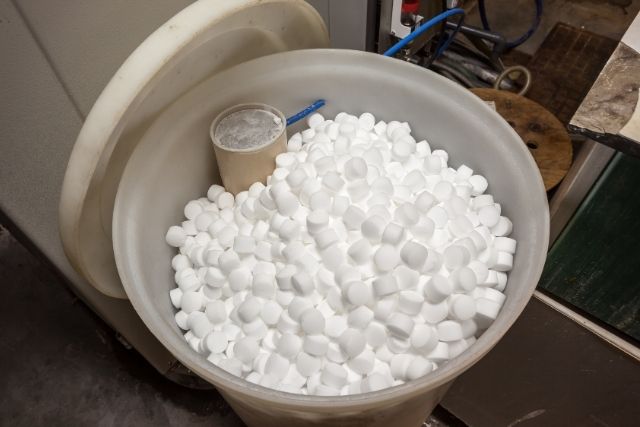Understanding How a Water Softener Works

Hard water is unfavorable for its harsh effects on your skin, dishes, household appliances, and plumbing. Excess calcium and magnesium buildup promote premature appliance and plumbing failure that can result in costly repair and replacement expenses.
Water softener systems are responsible for filtering out minerals that would otherwise make your water hard. To capture the importance of installing a water softener, Alamo Water Softeners offers a guide to understanding how a water softener works.
How Water Softeners Work
A water softener’s mission is to remove hard minerals from your water through ion exchange. Softeners strip your water of calcium and magnesium, the minerals that cause hard water.
This is how ion exchange works:
Hard water minerals are positively charged. As they enter the water softener, they’re met with resin beads that are negatively charged. Because opposing charges attract, the minerals are pulled from the water by the resin beads, stripping the water’s hardness.
While the ion exchange occurs in the mineral tank, a water softener wouldn’t be complete or functional without all its components.
Water Softener Components
Acknowledging each component of a water softener is critical to understanding how a water softener works. There are three primary pieces to a water softener that ensure adequate performance. The mineral tank, control valve, and brine tank each contribute to a well-functioning water softener.
Mineral Tank
Hard water is introduced to the mineral tank via a water supply line. From there, the water softening process begins. Water flows through the bed of resin beads, which accumulate the mineral ions. After the water is softened in the mineral tank, it’s redistributed to your home water system.
Control Valve
The control valve assesses how much water passes through the mineral tank into your home’s pipelines. Control valves are responsible for initiating regeneration cycles. Regeneration cycles are significant because they prevent resin beads from being overwhelmed with mineral buildup. Control valves are necessary to maintain water softener efficiency and lifespan.
Brine Tank
Brine tanks restore mineral tank resin beads so they can effectively filter hard water. Their concentrated solution of salt or potassium rejuvenates the positive charge in resin beads. A brine tank must contain enough of the concentrated solution for passing water to be softened.
Water Softener Regeneration
As mentioned, water softener regeneration is a critical aspect of effective water softeners. Softener regeneration blasts accumulated magnesium and calcium from resin beads. Without the elimination of the hardness minerals, water softeners would fail to make your home’s water any softer. Regeneration also enables resin beads’ longevity.
If you need water softener services in San Antonio, Texas, look to Alamo Water Softeners. It’s our objective to make sure your home’s water is as pure as possible. Our high-grade water filtration systems will significantly enhance your water’s value while improving skin health and maintaining home appliance and plumbing functions.


